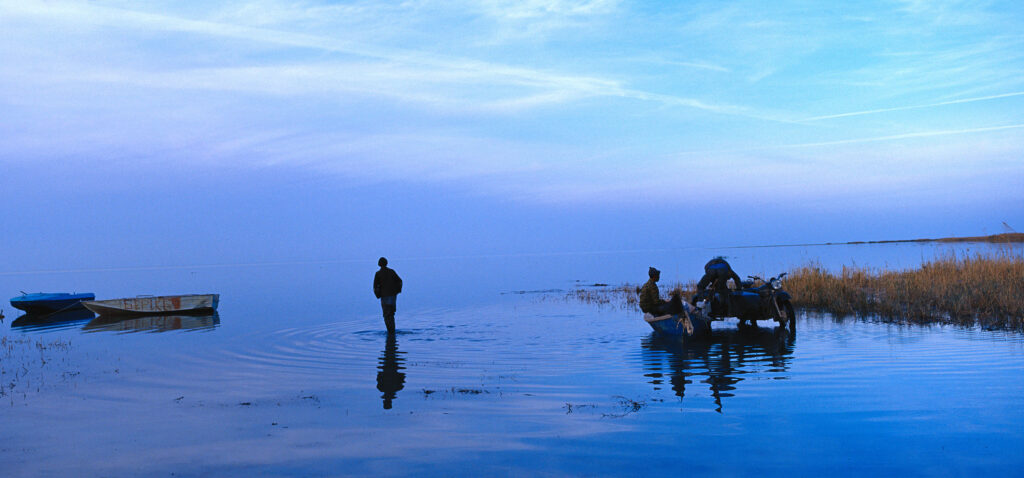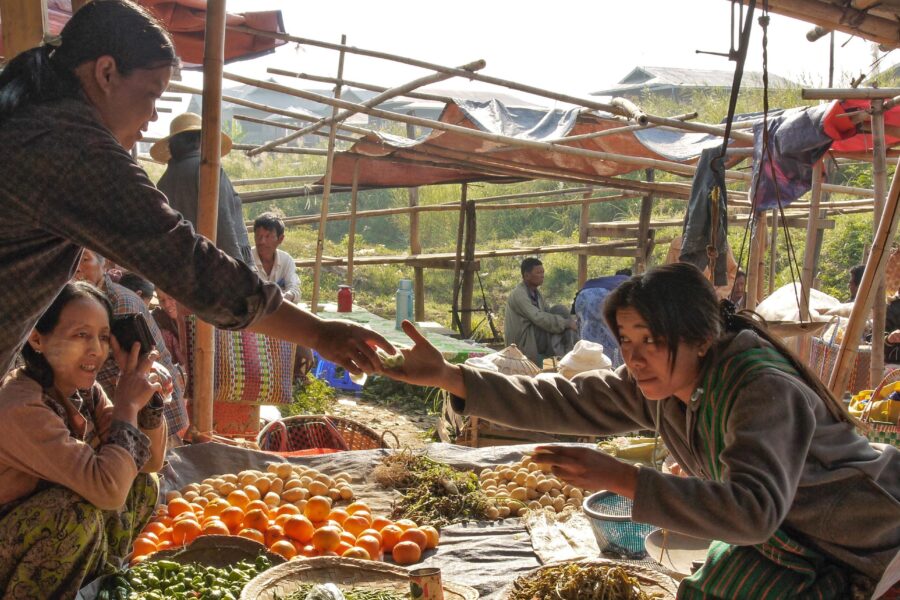Save our species: halting biodiversity loss needs systemic change
Without action, this century will see many more species go extinct. Halting biodiversity loss calls for all countries to act now to transform how we produce, consume, and manage resources
Biodiversity — Global

The sixth mass extinction is underway and biodiversity decline has picked up across many indicators. Species extinction rates are accelerating rapidly at a global scale. Around one million animal and plant species are threatened with extinction, constituting over a quarter of the world’s species. Projections estimate that doing nothing to reverse biodiversity loss will increase the number of extinct species globally by 4% (range 1% to 12%) by 2100.
These threats extend to the biodiversity that supports our food and agriculture systems. Globally, production systems and markets have become increasingly homogenized. There are at least 12,000 edible plant species (probably nearer 60,000), yet just nine of them account for 66% of global crop production. However, many edible plant species or their wild relatives are at risk of extinction. The use of local livestock breeds in production is declining, with 26% of breeds threatened with extinction, while 33% of fish stocks are overfished. Insects that support agricultural production are also at risk, with pollinator declines now being reported across the globe.
Biodiversity and the SDGs
Safeguarding biodiversity is linked to achieving many of the Sustainable Development Goals (SDGs), as biodiversity depends to various extents on land use and maintaining healthy, balanced ecosystems. There are large synergies between climate change mitigation (SDG 13) and biodiversity protection (SDGs 14 and 15). Tropical forests, for instance, store one third of the world’s land carbon and harbor more than two thirds of the world’s land-based species. Ensuring sustainable water management (SDG 6), both in terms of quality and availability, is crucial for the survival of many species. The reintroduction of some key species might lead to positive effects on stream hydrology. There are also multiple links between biodiversity and achieving food and nutrition security (SDGs 2 and 3).
Biodiversity in peril
Global biodiversity is directly threatened by five main anthropogenic drivers:
- The conversion of terrestrial and aquatic natural ecosystems to other uses.
- The overexploitation of organisms.
- Direct and indirect effects of climate change.
- Alteration and pollution of natural habitats.
- Invasion of alien species.
As natural habitats change and disappear, biological populations change and decrease with them. Replacing wild habitats with agricultural land and intensifying crop and livestock farming practices are the major culprits of biodiversity annihilation. Freshwater and marine ecosystems are being polluted by sediment and chemical run-off from agriculture. Marine biodiversity is jeopardized by fishing and aquatic ecosystem degradation. Freshwater biodiversity is declining in every major river basin, while deep-sea fishing is emptying large swaths of the ocean of nearly all life, disrupting coral reefs and causing extinctions and population declines at all latitudes. The trade in wildlife flora and fauna and their products is also a huge threat to many endangered species.
Unsustainable consumption and overpopulation are important indirect drivers of biodiversity loss. We can produce enough food to feed 10 billion or more people with nutritious diets, with no agricultural land expansion and without exceeding global climate change boundaries. Yet achieving this will require drastic changes in diet for most people. Providing the world’s eight billion people with the diets and living standards of those living in the USA, for example, would require double the planet’s resources in terms of energy consumption. While improved standards of living lead to smaller average family sizes, they also create increased per capita resource consumption. At current population levels, we would need five times the planet’s resources to ensure no one lives in poverty without compromising people’s freedom to choose how many children they have.
Poorly targeted, weakly enforced and insufficient coverage of protected areas hamper efforts to safeguard biodiversity. Yet conservation measures such as creating protected areas are a critical strategy for halting biodiversity loss, if implemented effectively. Currently, the world’s protected areas cover nearly 16% of terrestrial and freshwater environments and 8% of marine areas, but they do not fully protect areas of importance for biodiversity conservation, and they are not all effectively or equitably managed.
We need systemic change
Halting biodiversity loss requires systemic change. Removing the direct and indirect drivers of biodiversity loss calls for a transformation of the way we produce, consume, and manage resources at all levels. We must move towards a circular economy underpinned by sustainable food and land use systems. Policy investments and incentives, technical innovations, responsible marketing, education at all levels, and alternative business models all have a role to play. Together, they must stimulate societal and cultural behavior changes towards minimum pollution and waste, and reasonable per capita consumption.
As acknowledged by SDG 12, consumers play a key role in adopting lifestyles that are in harmony with nature. However, consumers need to be informed about their current ecological footprint. Greener alternatives should be both attractive and accessible. Studies have highlighted that global population growth may peak soon after mid-century if living standards for women continue to improve. To achieve decent living standards for all by 2050 while reducing pressure on biodiversity, we must combine education with game-changing policies and business models that support sustainable consumption.
Life on land
Preserving biodiversity on land will require actions on many fronts. We must restore wilderness areas, significantly improve the ecological functioning of managed land, and improve and expand the conservation of biodiversity in protected areas. Allowing large predators to reinhabit lost territories, through active reintroductions and creating habitat corridors to facilitate migration, would help restore faunal integrity and recover population numbers.
On agricultural land, we need to restore ecological functioning, for example through agroforestry, use of cover crops, no or reduced agrochemical inputs, and reduced tillage. We must combine these efforts with actions to provide fair incomes, opportunities, and living standards for agricultural workers.
Finally, successful land conservation outcomes will depend on:
- governance
- local engagement, including respecting and protecting indigenous people’s rights and stewardship roles
- effective and equitable benefit-sharing mechanisms
- sustainable funding
- effective monitoring and enforcement systems of protected areas
Life in water
Halting and reversing loss of marine life would be greatly supported by abolishing subsidies for unprofitable large-scale commercial fishing fleets. It would also be helped by introducing and enforcing, through independent observers and spot checks, strict equipment restrictions that reduce by-catch and damage to non-target species or coral reefs.
The regulation and expansion of well-designed marine protected areas, especially in habitats used by megafauna and migratory species, can also contribute to the conservation of biodiversity and sustainability of food provision. These measures are unlikely to result in the complete recovery of fish stocks, but give us a chance of not losing the aquatic biodiversity that remains.
Conclusion
More than ever before, human activities are the direct and indirect drivers of biodiversity loss. The negative effects of species extinction and ecosystem degradation on the vital services that ecosystems provide are likely to increase in the next few years.
Current national biodiversity strategies struggle to address major drivers of biodiversity loss. Countries must take immediate action to improve biodiversity conservation and transition to sustainable production and consumption patterns. Through this, they can help restore biodiversity while achieving healthy diets and a good standard of living for all people by 2050.
As we approach the climate and biodiversity COPs and UN Food Systems Summit, countries should now seek to develop integrated long-term strategies to ensure coherence across the biodiversity, food, climate, water, and energy sectors.





